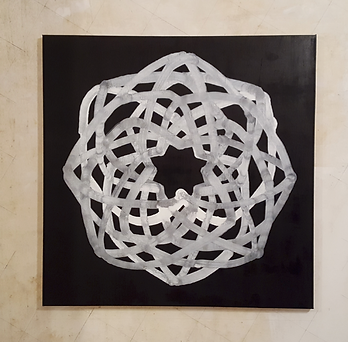Marie Cloquet
TRAVELING LIGHT
08/09/2019 - 20/10/2019
Marc Rossignol
Synchrone
Opening Sunday 9 September 2018
Marc Rossignol
Synchrone
Opening Sunday 9 September 2018
Marc Rossignol
Synchrone
Opening Sunday 9 September 2018
Marc Rossignol
Synchrone
Opening Sunday 9 September 2018
Herman Van Ingelgem
Foreign Bodies & Protheses
06/09/2021 - 17/10/2021

MARC DE BLIECK
The work of Marc De Blieck (°1958) revolves around the problem of the viewpoint. Viewpoint refers here as much to a specific point in space and time as to a point of view, an expression of an opinion. A photographer always stands somewhere, aims his camera in one direction, and by aiming directs the attention of the viewer to a particular topic. In his series, De Blieck tries out various strategies to create a situation where taking up a position doesn’t necessarily lead to voicing a statement. In trying to extract himself from the photographic process, he undermines any authorial claim (he’s not the ‘one who knows’). One way of diluting his authorship consists in subjugating himself to a rigorous system that takes the decision in his place, as in ‘The Meydenbauer Legacy’ (2008) for instance where he used the system of photogrammetry to ‘select’ his viewpoint. Another strategy becomes apparent in his propensity for collaborations with architects, art historians, philosophers, thereby challenging the idea of a unique authorship. Elsewhere, in a series on the Picos mountain range in Spain, he layers different pictures of the same mountainous landscape on top of one another. The different shots were all taken from the exact same spot but at different moments, each time also using a different color filter. Conflicting shadows give rise to a confusing landscape, no longer moored in one time, or in one space. In ‘Ricochet’ (2004), a series based on the sniper attacks in Washington DC, De Blieck combined some 8.000 images in a digital projection that only obliquely referenced the sites that came under fire. The result is an aimless wandering through the neighborhoods that were attacked, a way of looking at these places that is conspicuously at odds with the focused (and deadly) gaze of the two gunmen. The stated goal here is not to repeat the age-old trope about the similarity between camera and gun, but, quite the opposite, to disarm the photographer by standing (purposefully) in the ‘wrong’ place. In his more recent work, centered around museum displays and sites of world heritage, De Blieck’s search for a non-position lead him to take up the ‘expected’ viewpoint, i.e. the prescribed, and therefore, in a certain sense, ‘natural’ position. By choosing these self-evident subjects (museological objects that are already on display or sites that are already renowned for their historical importance) and by occupying a common viewpoint, De Blieck generously retreats to the background. Sidestepping the desire to produce information or knowledge, he uses this ‘pointless’ viewpoint to turn the camera into a self-effacing, unpretentious tool of pure perception.
Steven Humblet, 2017
.png)
.png)